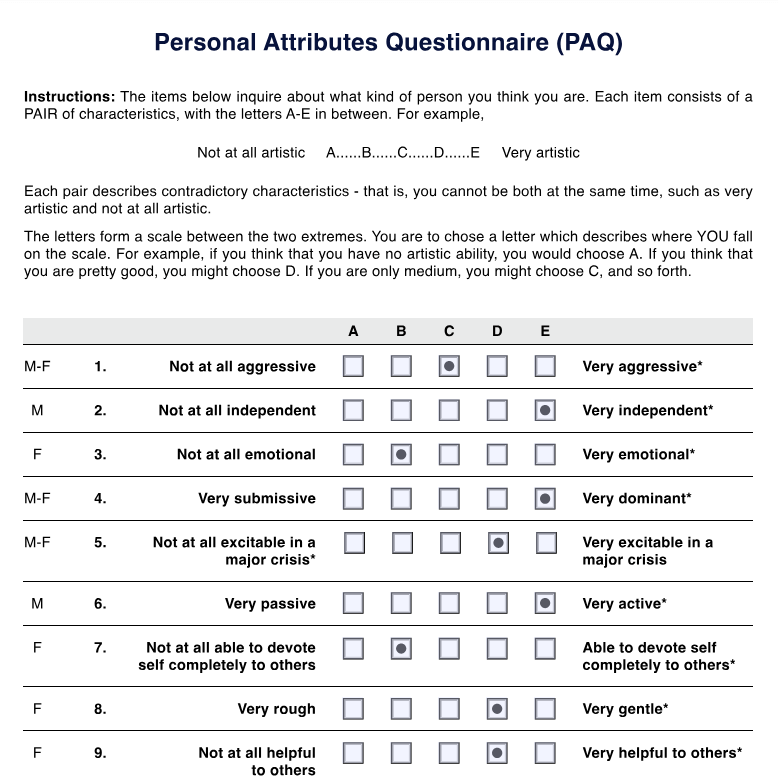Some questions to ask about gender include: "How do you identify your gender" and "What pronouns do you prefer" These questions help individuals express their gender identity and feel respected and validated.

Personal Attributes Questionnaire
Learn what a Personal Attributes Questionnaire (PAQ) is and access Carepatron's free PDF download of an example. Understand how this tool can help you assess personal attributes effectively.
Personal Attributes Questionnaire Template
Commonly asked questions
Understanding gender identity is crucial for creating inclusive and supportive environments where individuals feel accepted for who they are. It helps prevent discrimination and promotes respect for diversity.
Gender identity refers to an individual's internal sense of their gender, while gender role refers to societal expectations and norms associated with gender. Understanding one's gender identity can influence how they perceive and enact gender roles, but they are not inherently linked.
EHR and practice management software
Get started for free
*No credit card required
Free
$0/usd
Unlimited clients
Telehealth
1GB of storage
Client portal text
Automated billing and online payments











